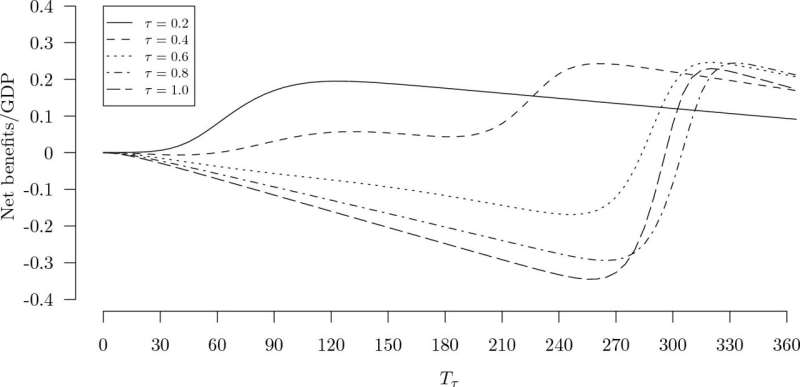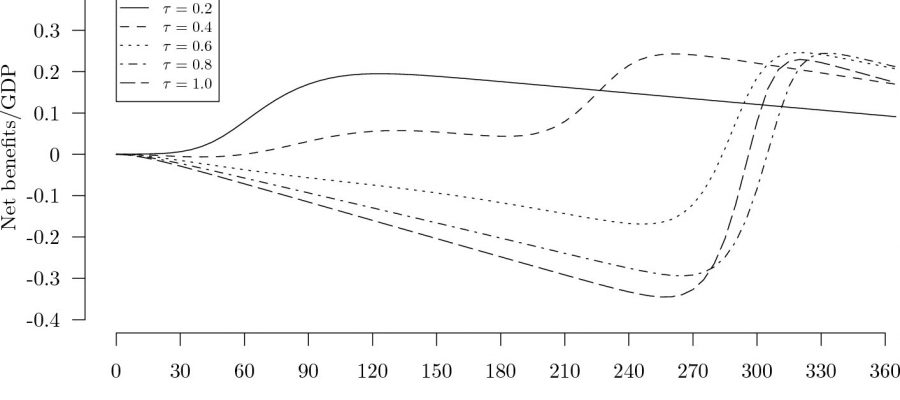
Regular diagnostic testing and self-isolation can be more effective than school and business closures when it comes to combating infectious disease outbreaks such as COVID-19, according to a new study by University of Wyoming researchers. The findings were published May 20 in Scientific Reports.
UW Department of Economics faculty members Stephen Newbold, David Finnoff, Jason Shogren and Linda Thunstrom, along with recent Ph.D. graduate Madison Ashworth, developed an epidemiological and economic model to compare the effectiveness of physical distancing mandates with policies encouraging regular testing and self-isolation to combat an emerging pandemic. They found that, in most scenarios considered, a random testing strategy would outperform a physical distancing strategy for mitigating COVID-19 or similar diseases.
“The United States initially attempted to combat the spread of (COVID-19) using a portfolio of controls that is heavy on physical distancing and masks and light on regular diagnostic testing with self-isolation,” the researchers wrote, noting that the former included work-from-home requirements, school and business closures, and travel restrictions. “However, these same measures also have led to reduced employment, lost earnings and a variety of adverse physical and mental health impacts due to withdrawing from economic activities and curtailing social interactions for long periods.”
While a number of researchers and public health experts have conducted studies suggesting testing and self-isolation would be more effective than large-scale shutdowns, the UW study is the first to take into account the concept of “superspreading”—in which a large share of people are exposed to a pathogen by a small number of infected individuals.
The UW researchers also used a wide variety of model variations looking at both economic benefits and costs, and health outcomes, of the two approaches to combating a disease outbreak. The study took into account diagnostic test error rates, self-isolation compliance rates, the cost of testing and lost economic productivity from physical distancing or isolation.
The researchers acknowledge that there is no clear answer to whether government policy in the event of an outbreak should focus on suppressing the disease through aggressive actions or slowing the spread through less aggressive measures—apparently subtle differences can lead to one approach performing better than the other in any given case.
The main implications of the study, however, centered on the relative performance of physical distancing vs. testing.
“We found that for an epidemic similar to the ancestral strain of SARS-CoV-2, an optimized strategy of random testing with voluntary self-isolation can deliver higher net benefits than a physical distancing strategy over a wide range of plausible conditions in our model,” the economists wrote, adding that incorporating the concept of superspreading makes the testing-isolation approach even more effective than physical-distancing mandates.
More information:
Stephen C. Newbold et al, Physical distancing versus testing with self-isolation for controlling an emerging epidemic, Scientific Reports (2023). DOI: 10.1038/s41598-023-35083-x
Journal information:
Scientific Reports
Source: Read Full Article
